When I was little, I logged a lot of time basking in the glow of a cathode ray tube. When my kids were small, they absorbed Disney DVDs on our HDTV. Today, youngsters watch YouTube on their phones and tablets.
The
viral video site has become a massively popular destination for very
young children. Videos on YouTube’s Sesame Street channel alone have
been viewed nearly 1.8 billion times.
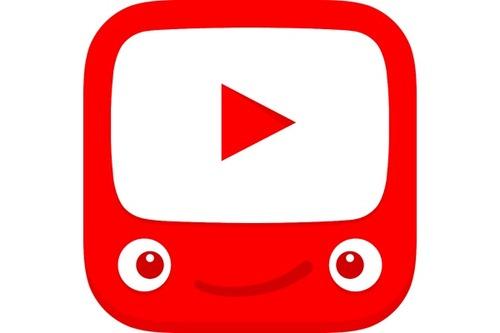
(Google)
The
problem? While there’s a ton of kid-friendly content on YouTube,
there’s also a lot that isn’t. It’s still pretty easy for kids under age
13 to create adult accounts and watch potty-mouthed gaming and sexy
booty shake videos — or, more terrifyingly, upload their own.
Related: 10 Ways to Make YouTube Safer for Your Kids
So
Google has created YouTube Kids, a free app that debuted in the Play
and Apple iTunes stores last week. With YouTube Kids, all of the content
is curated to ensure that it’s safe for kids age 4 and up. The app also
adds basic parental controls that let you limit what kids can search
for and how long they can watch.
YouTube
Kids is pretty good. But it’s far from fully baked. And if you’re
hoping it will keep your little ones from being exposed to advertising
and digital marketing, I’ve got some bad news for you.
What’s the apps?
YouTube Kids is clean and well-organized, with a pleasingly simple home screen that’s divided into four primary areas.
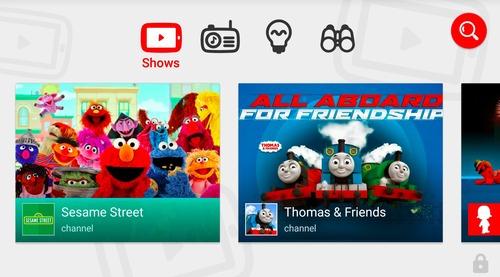
There’s
Shows, a lineup of kid-friendly channels; Music, which ranges from
nursery rhymes and Disney to classical; and Learning, which consists of
roughly three dozen educational channels. Finally there’s Explore, which
includes user-uploaded videos about things like cooking, cats, and
puppies, as well as branded channels from Legos, Playdough, and other
toymakers – complete with TV-style commercials.
Once
your kids start watching videos, a heart icon appears on the screen. It
shows that there are recommended new videos based on the ones your kids
have already watched. Once they watch one video, the next one starts
playing automatically.
Overall,
the range and depth of the content is impressive. There’s a ton of
stuff from Sesame Street, including old-school clips from the 1970s
(like Paul Simon singing “Me and Julio” with a handful of kids who have
their own lyrics to contribute).
You’ll
see a lot of other familiar characters among the 100+ channels, like
Thomas the Tank Engine, Barney, Barbar, a smattering of Peanuts, some
Disney, Yo Gabba Gabba, and others.
The
educational lineup is particularly strong. You can dial up videos from
Reading Rainbow, PBS Kids, Speakaboos, National Geographic Kids, Kahn
Academy, and TED-Ed.

The
latter combines brief TED Youth lectures with clever animation to
address such questions as why blue whales are so large, how feathers
evolved, and why elephants never forget. You may find yourself watching
these after your kid goes to bed.
Beyond
that, your kids can search YouTube’s vast archives either by typing or
using voice commands. The archives have been filtered to remove anything
that isn’t family friendly. If they try to search for non G-rated
materials, they are greeted with the following:
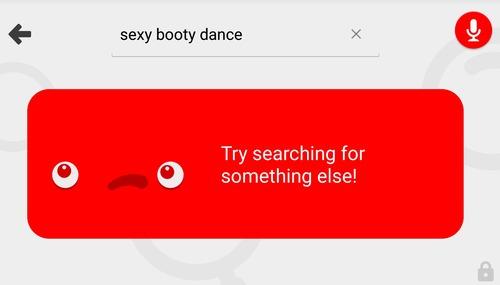
I
cannot say for certain YouTube Kids’ filters are foolproof, but they
are a heck of a lot better than the bare-bones tools you’ll find on the
grown-up Web site. And if you’re still concerned about what they might
find, you can limit them to watching just the channels already offered
inside the app.
You are in control… sort of
One
of YTK’s key selling points is that it offers better parental controls
than the Web site. That’s true, but they’re still pretty minimal. You
can turn off background music and the irritating sound effects (which
kids will probably enjoy). And you can turn off search, which limits
kids to selecting only from the channels presented on the main screen.
You
can also set a timer to turn the app off after a set amount of time –
the default is 30 minutes, the maximum is two hours. Kids receive a
two-minute warning when time’s about to run out, and then the app takes a
well-deserved nap.
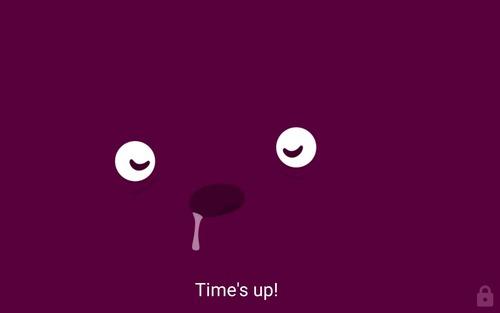
I
think this is the feature parents will appreciate most, but it’s not
all the way done: The timer is off by default, and you can’t tell the
app to only run during certain times, like only after school or never
after 8 PM.
Getting
to the apps’s settings, though, is a little odd. You tap the padlock
icon in the lower right corner of the app, which brings up a key entry
pad titled “Grown Ups Only!” (Like that’s going to keep anyone out.)
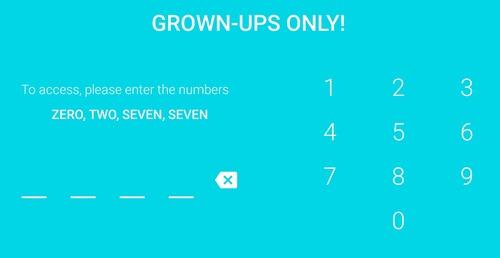
To
reach the controls, adults must punch the numbers of the four-digit
code that’s spelled out above the keypad. (The code changes each time
you tap the lock.) The problem? Once kids get past kindergarten, the
odds of them being able to read that code – or convince a slightly older
sibling to enter it for them — increase significantly. It’s a
child-safety cap that almost any child will be able to unscrew.
Once
the kids are in, the worst that can happen is they turn off the timer
or turn on search. Still, the security here is pretty lame, and other
parental control features are scant. For example, you can delete the
viewing history, but you can’t actually see which videos your kid
watched. So unless you’re hovering over their shoulders, you don’t know
whether your kids spent all their time diving into science and math
videos at TED-Ed or gorged on the insipid adventures of Strawberry
Shortcake.
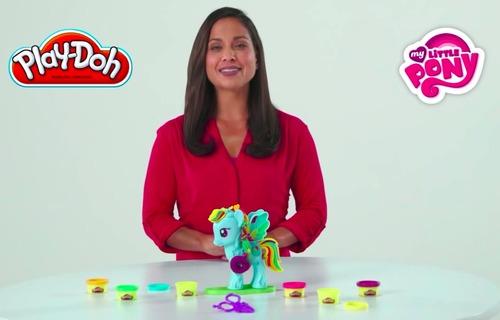
I
also could find no way to block particular channels – if, say, you
don’t want your kids watching commercials for Playdough’s My Little Pony
toy, for example – and no way to turn off autoplay.
The
app appears to be utterly separate from YouTube.com, which means you
can’t transfer channels or videos from one to the other. If you’ve spent
time carefully curating content for your kids on the Web, you choices
won’t carry over to the app, or vice versa.
When ads subtract
There’s
no question that using YouTube Kids is a better option than letting
young kids loose on YouTube.com. The curated content and the timer alone
are worth it.
The
question is how much advertising they’ll be exposed to in the process. I
scanned a few dozen videos, and nearly all of them were ad free – with
the exception of the branded channels and some of the user-uploaded
videos in the Explore section. Many of those ads are virtually
indistinguishable from other content. Young kids certainly won’t know
the difference.

According to the FTC,
kids age 2 to 11 watch more than 25,000 TV commercials every year.
YouTube Kids is a lot better than that, but you’ll still want to keep an
eye on what your wee ones are watching in this app.
“You need to make careful choices in what you select for your kids,”
notes Jim Steyer, founder and CEO of Common Sense Media, which reviewed YouTube Kids and
gave it largely positive marks. “The point we always make to our
friends at YouTube and Google is always be careful about advertising to
kids, who are less able to differentiate between content and ads. We
need to hold them to the highest standards of appropriateness.
No comments:
Post a Comment